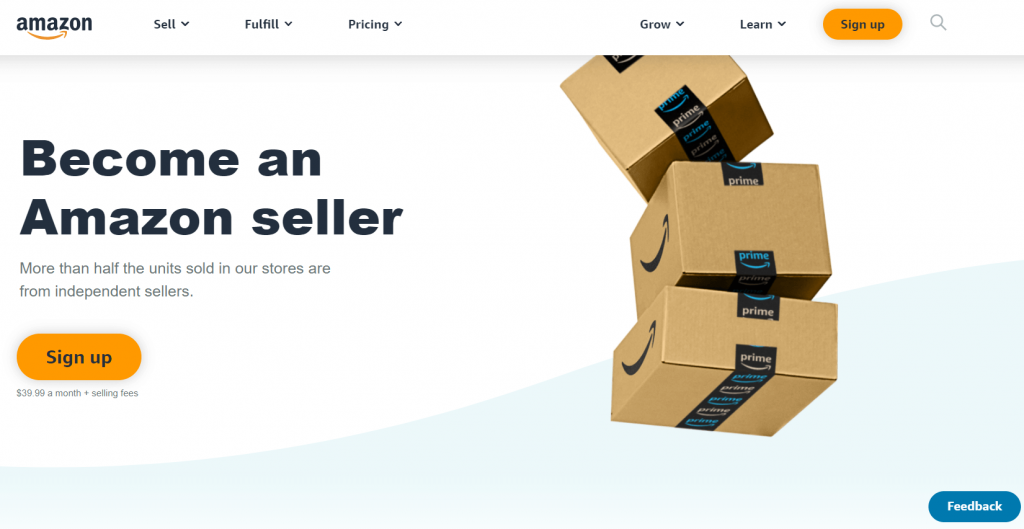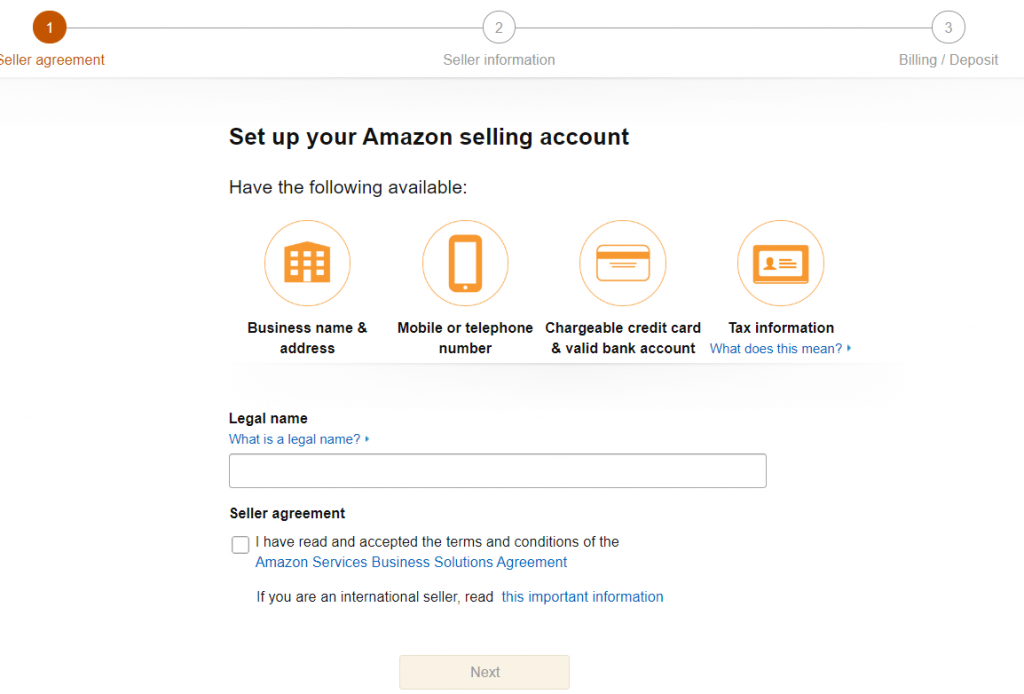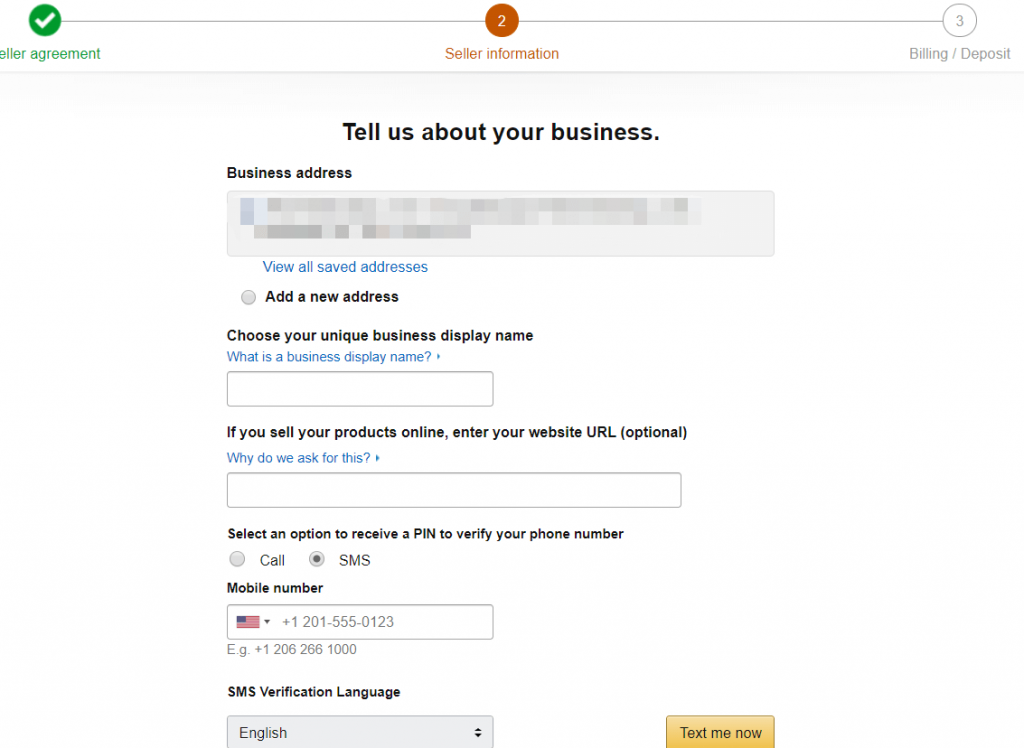how to create an individual seller account on amazon
If your dream is that of creating an online business, perhaps you're wondering where to start. Creating an online store could be a solution, but you'll have to face fierce competition and invest thousands of dollars in marketing and advertising.
Selling on Amazon could be a much more appropriate option. You won't have to worry too much about advertising, and you'll have higher chances of selling your products even if nobody knows you.
The first step to building a business on Amazon is to create an Amazon seller account.
In this article, we aim to tell you all you need to know about creating an account, types of accounts, as well as its costs. Read on.
- Individual Seller vs. Professional Seller Account
- What should you know before creating an Amazon account?
- How to create an Amazon account?
- Conclusion
Individual Seller vs. Professional Seller Account
The Amazon marketplace allows sellers to create two types of accounts, Individual seller accounts and Professional seller accounts.
Individual seller accounts
Allow beginners to register and start selling on Amazon without paying any subscription fees.
Individual sellers can list their products in more than 20 categories and only have to pay selling fees of $0.99 per item, plus any variable closing fees as well as referral fees.
This plan is ideal for businesses that don't plan to sell more than 40 items per month.
Professional seller accounts
Professional sellers can also list their products in the same categories as individual sellers, as well as other 10 categories reserved to professional sellers only.
The plan is suitable for businesses that aim to sell more than 40 items per month, but it comes with a subscription fee of $39.99.
Apart from the subscription fee, sellers will also have to pay variable referral and closing fees. However, you won't have to pay the pre-item fee of $0.99 for each item sold.
With this in mind, you should know that there are other subtle differences between the individual and professional seller accounts, including:
- Listing new products: With a few exceptions, only professional sellers can set up listings for products that have never been offered by Amazon before. Individual sellers will usually have to add their offers to listings already created on Amazon.
- Setting up shipping rates: As a professional seller, you can decide how much to charge your customers for shipping.
- Listing products in gated categories: Only professional sellers can apply to sell in gated categories, including automotive, power sports, music, jewelry, appliances, sports collectibles, watches, fine art, entertainment collectibles, and more.
- Setting up promotion campaigns: only professional sellers can set up coupons or discounted campaigns on listings.
- Gaining Buy box: Individual sellers cannot be featured as the first option for the shopping cart. Only professional sellers can take up Buy Box and gain more sales.
- Bulk upload feature: Only professional sellers can bulk upload SKUs or products' info which will be a time-saver if sellers have many products to list.
What should you know before creating an Amazon account?
Now that you know what are the differences between individual and professional seller accounts let's find out what you should know before creating an account on Amazon.
Account Fees
Whether or not you'll have to pay for setting up your account on Amazon depends on what kind of seller you want to be.
Individual sellers can open their accounts free of charge, but they will have to pay the pre-item fee of $0.99 for each item sold. If you plan to sell many products on Amazon, it is more convenient to subscribe as a professional seller.
Professional sellers have to pay $39.99 per month for the service, but they have no pre-item fee. Since all other fees are identical between this type of account is suitable for anyone planning to sell more than 40 items a month.
Apart from these fees, there are other fees you'll have to pay.
- Amazon referral fees: This is basically a commission all sellers pay to Amazon to sell on the marketplace. The fee ranges from category to category and varies from 12% to 40%. However, for most categories, the referral fee is 15%.
- FBA fees: If you opt for your items to be fulfilled by Amazon, you'll also have to pay the FBA fees that start at roughly $3 for small items and go up from there, depending on the volume and weight of your products.
- Inventory storage fees: Applied to those who fulfill their orders by Amazon. This is a fee you have to pay for the space your items occupy in the Amazon warehouse.
- Media fees: Sellers operating in media categories such as books and DVDs also have to pay additional media fees. Known as a closing fee, this is usually a fixed charge of $1.80 per each item sold.
Account Opening Requirements
Amazon will ask for a bunch of information about you and your products, including a company or individual tax details, business address, credit card and bank account details, as well as phone number and an email address to associate with your account.
Once you've provided this information, you become a registered seller. Then, Amazon will encourage you to create the first listing to change your status from registered to launched seller.
Read Also: How to List Products on Amazon: Complete Guide for FBA Sellers
Jurisdiction
Another important thing to decide is where you want to sell your products. The required tax information might be slightly different if you plan to sell in the US or on other Amazon marketplaces.
You also have the option to sell on various marketplaces; however, this option might not be ideal unless you're selling software or other products that don't have to be physically shipped – otherwise, the shipping costs could be very high.
Another thing to keep in mind is that you should never create more than one account on Amazon. Duplicate accounts are penalized, and you might lose the change to become a seller on the marketplace in the future.
Read Also: 11 Reasons Amazon Can Ban Your Seller's Account
How to create an Amazon account?

With this in mind, you're probably ready to create your Amazon seller account already. Here's how:
Step 1 – Decide what kind of account you want to set up
We already explained the two types of seller accounts you can opt for, and what are the differences between them.
If you have a low budget and plan to start small, an individual account might be just right for you. It is easy to set up with no registration or subscription fee and allows you to sell as much as you want.
However, if you plan to sell more than 40 items a month, or if you want more flexibility on creating new listings or selling in gated categories, you should set up a professional seller account.
Once you've decided, click the appropriate button. From this moment on, creating a seller account is similar for both types of sellers.
Step 2 – Create Your New Account
Go to Amazon.com and click on" Sell on Amazon" at the bottom of the website. At this stage, enter your email address or mobile number, select Create a New Account from the available options, and click on Continue.
Step 3 – Enter Your Personal Information

Amazon will now ask you to enter your personal information, including full name, an email address you will have to re-confirm, as well as a password. Click the Next button.
Step 4 – Insert Your Business Details

Now, you will have to provide all the information regarding your business. To make the process smooth and fast, make sure you have available your business name and address, phone or mobile number, credit card and bank account details.
Fill in all the fields, and make sure to use a valid phone number that you have access to.
To verify that you're not a bot, Amazon will either call or send you an SMS with a PIN number you have to insert in the appropriate text box on the platform. When you're done, click Next.
Step 5 – Fill In Your Billing and Deposit Details
Regardless of what type of account you decide to create, you'll have to pay fees sooner or later. That's why Amazon asks you to set up a billing method, usually a credit card.
You can also use a debit card if you want to, just make sure you have enough money on your account.
Because you're planning to make money on Amazon, you must also set up your deposit details, aka the bank account details where you want the marketplace to transfer your funds.
Step 6 – Enjoy Your Seller Central Account
That's it! You're now registered as a seller on Amazon, and all you have to do is get used to your Seller Central account before creating your first listing.
Before being able to do anything, you may also have to set up a two-step verification process, meant to protect your account from fraudulent access. Once you're done, simply log in to your Seller Central account, list as many products as you want, and manage your orders from here.
Conclusion
Creating an Amazon seller account is relatively easy and straightforward. Perhaps the most difficult part is that of deciding what products to sell, what type of account to create between individual and professional, and the best fulfilling option for your business.
Once you've figured out these variables, all you have to do is follow the steps above to set up a seller account and start your new business on Amazon.
You may also like:
How to List Products on Amazon: Complete Guide for FBA Sellers
How To Ship Product To Amazon FBA Warehouse
A List of Useful Amazon Seller Tools to Increase Your Amazon Sales
8 Tips To Increase Your Amazon Conversion Rate
how to create an individual seller account on amazon
Source: https://www.amzfinder.com/blog/create-amazon-seller-account/
Posted by: milsapmustrien.blogspot.com

0 Response to "how to create an individual seller account on amazon"
Post a Comment